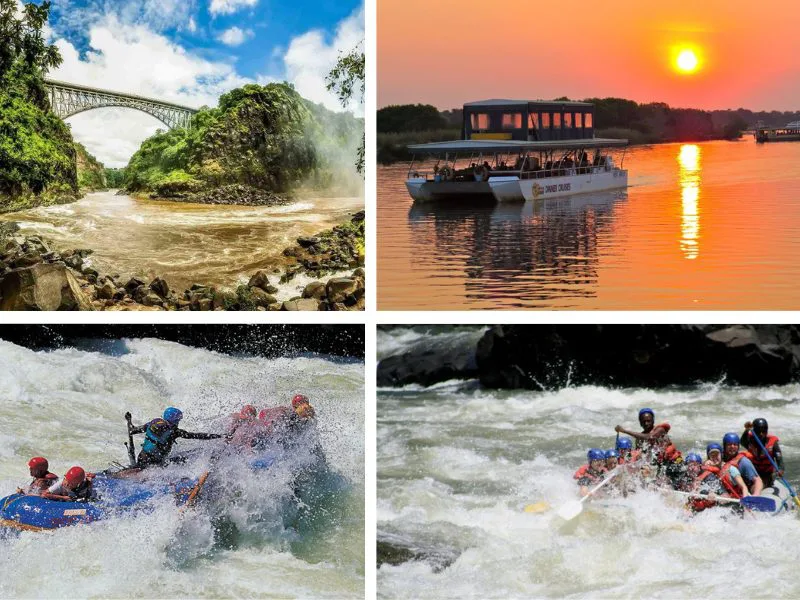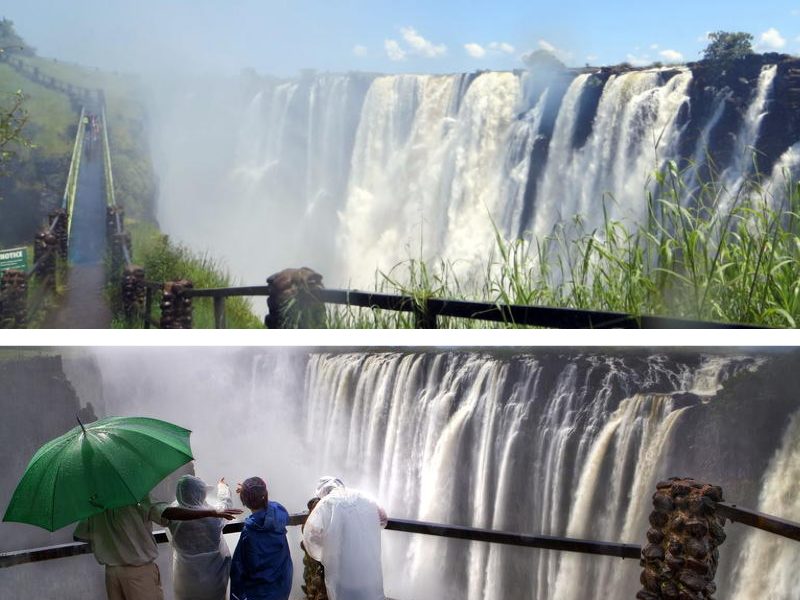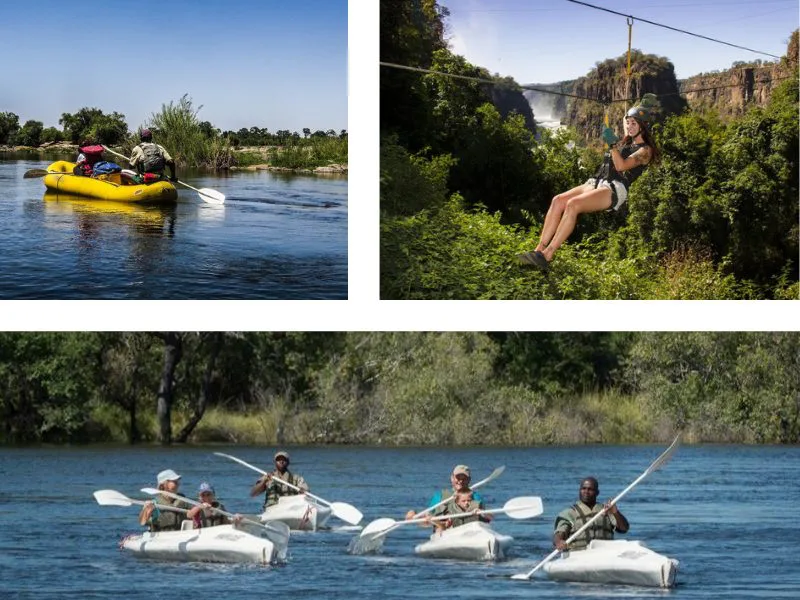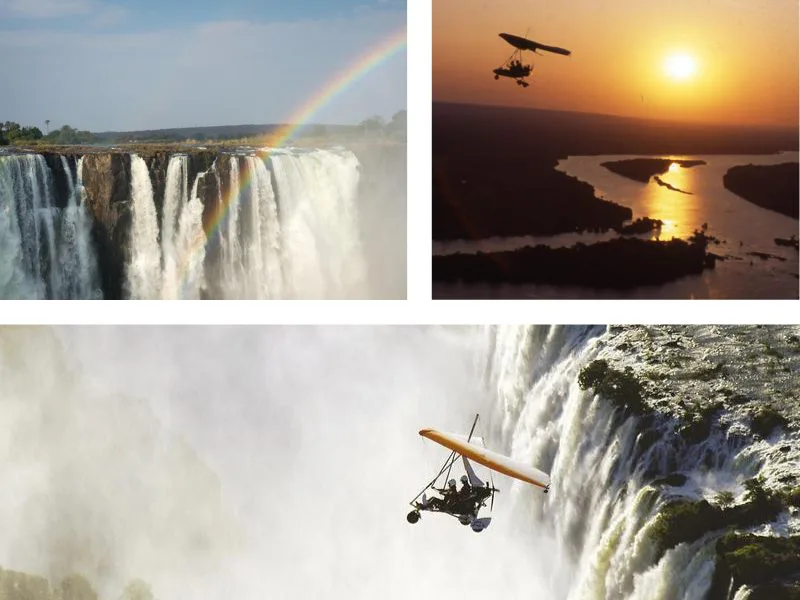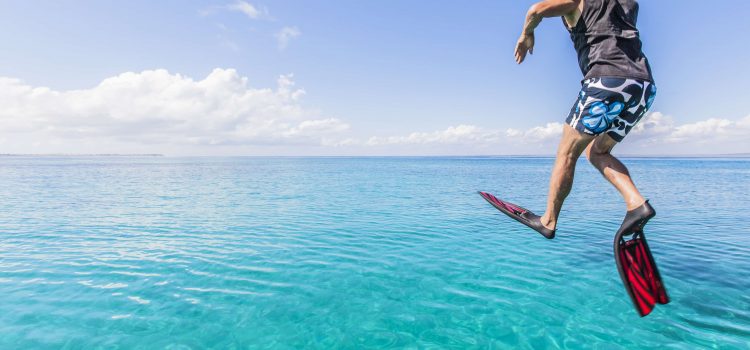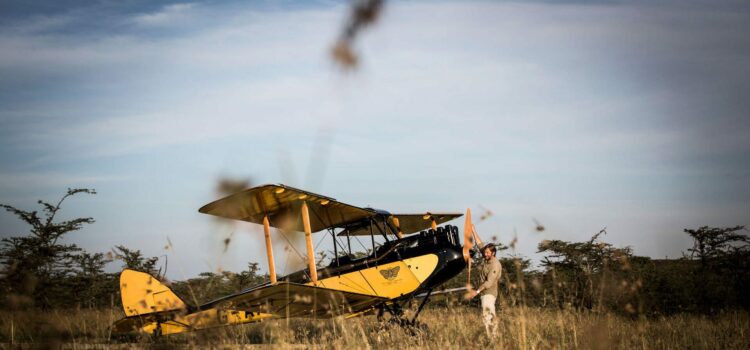Mosi-oa-Tunya – the smoke that thunders. That’s the local name for the world’s largest waterfall (measuring roughly double the height of the Niagara Falls), and it aptly fits the impression that David Livingstone would have had in first approaching this remarkable ‘discovery’. It, too, will be your first sight of the Falls – a continuous micro-climate of mist hanging in the sky above the tree line as something awesome thunders away in the distance – regardless of whether you’re approaching it from the Zimbabwe or Zambia side. But just which side is best?
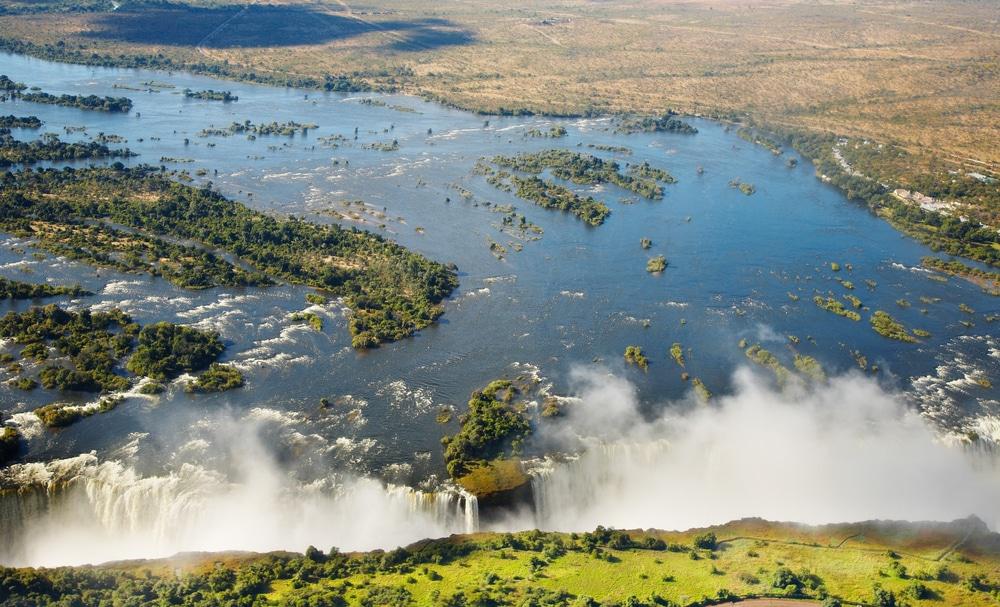
Victoria Falls stretches more than a mile and plummets over 300 feet into the gorge of the great Zambezi River, which snakes between these two southern African countries, both well-known as top safari destinations. A small tourist town services each side, both have international airports, decent infrastructure and plenty of soft adventure activities.
From the Zimbabwean side, the view of Victoria Falls is two thirds of the precipice, though a lot of it is on Zambian territory. Here, you will be able to see the iconic view of the Main Falls and have the chance to wander in and out of a true rainforest that is drenched in mist (and so shall you be) for the entire year. The water never dries up, and even during the worst part of the dry season (October to November) you will still be able to see the magnificent water flow of the Main Falls and Devil’s Cataract.
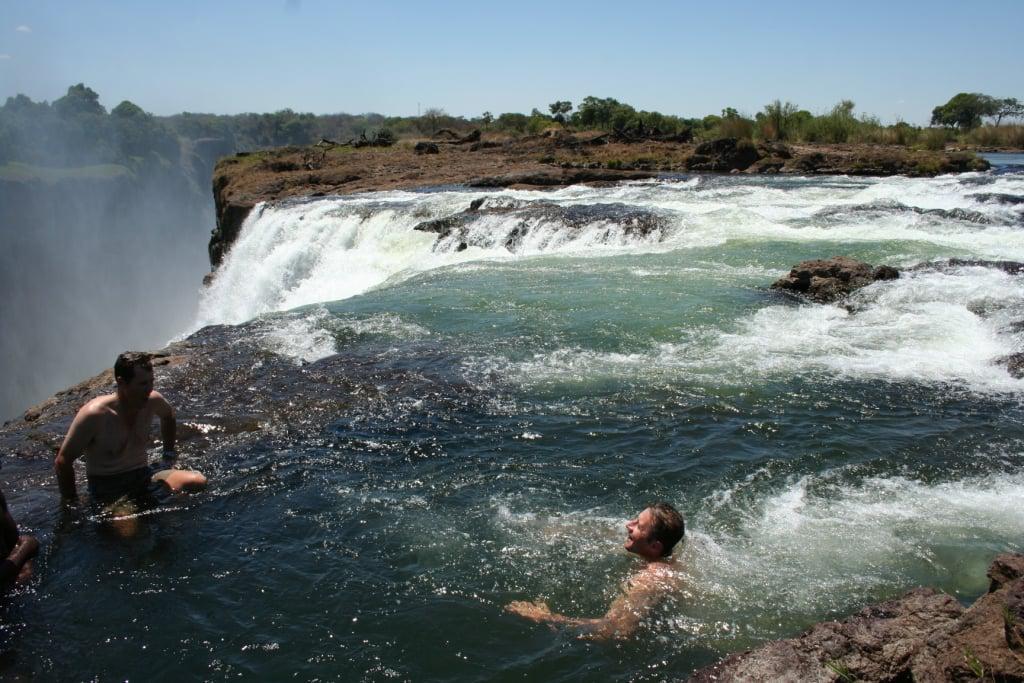
On the Zambian side, however, you have the opportunity to gaze down the full length of the first gorge but in the dry season (September to November) there is very little water at this end of the Falls. On the plus side, only in Zambia do you get the opportunity to come extraordinarily close to the waterfall. We suggest taking one of the numerous footpaths down to the Boiling Pot – an enormous whirlpool at the foot of the Falls. Zambia also boasts a swim in the famous Devil’s Pool (only during the dry season and not for the faint of heart!) where you get to peep over the natural ledge to the swirling chasm below. Victoria Falls is simply too big to be appreciated from a single vantage point. So, just which side is best?
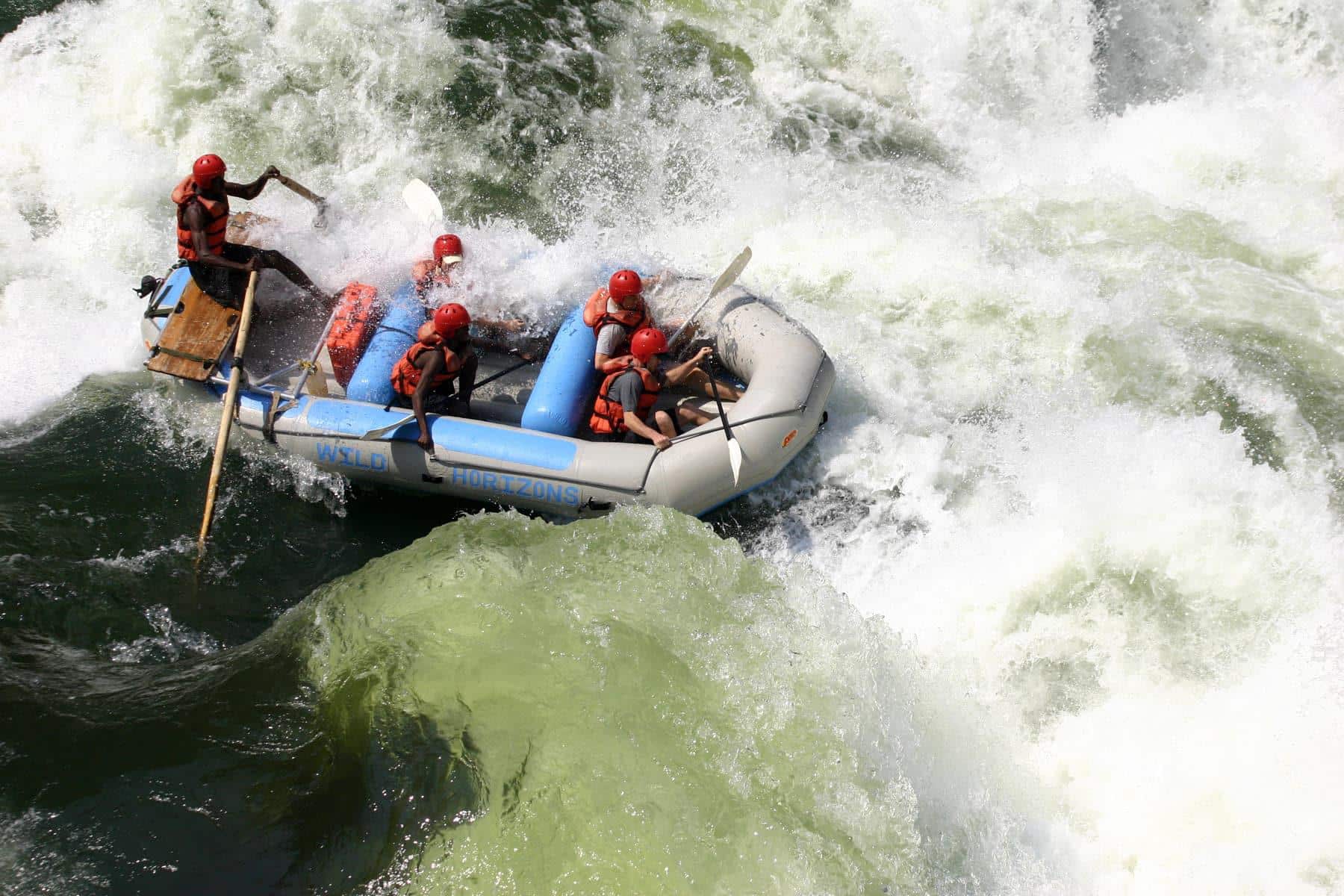
From the Zambian side, you can sign up for a whitewater rafting trip down a dozen grade four rapids; they are the original company operating on this river, but several rival companies offer a similar experience from Zimbabwe. Most popular activities can be arranged in either town – although only from the Zambian side can you access Livingstone Island, Devil’s Pool or do a scenic flight in a Microlight.
If you’re in Victoria Falls, the town on the Zimbabwean side, you can easily stroll down the road and into the Falls viewing park, as well as wander to the nearby shops and markets on your return as most hotels and lodges are within easy walking distance. (Victoria Falls is situated less than 1 mile from the Falls) It is perfectly safe to wander around the Falls in Zimbabwe in the day time. However, from Zambia’s Livingstone (roughly just over 6 miles from the Falls), it’s not quite as practical since a taxi ride is needed to get to and from the entrance. Victoria Falls town is also much smaller than Livingstone, making it quainter and more accessible.
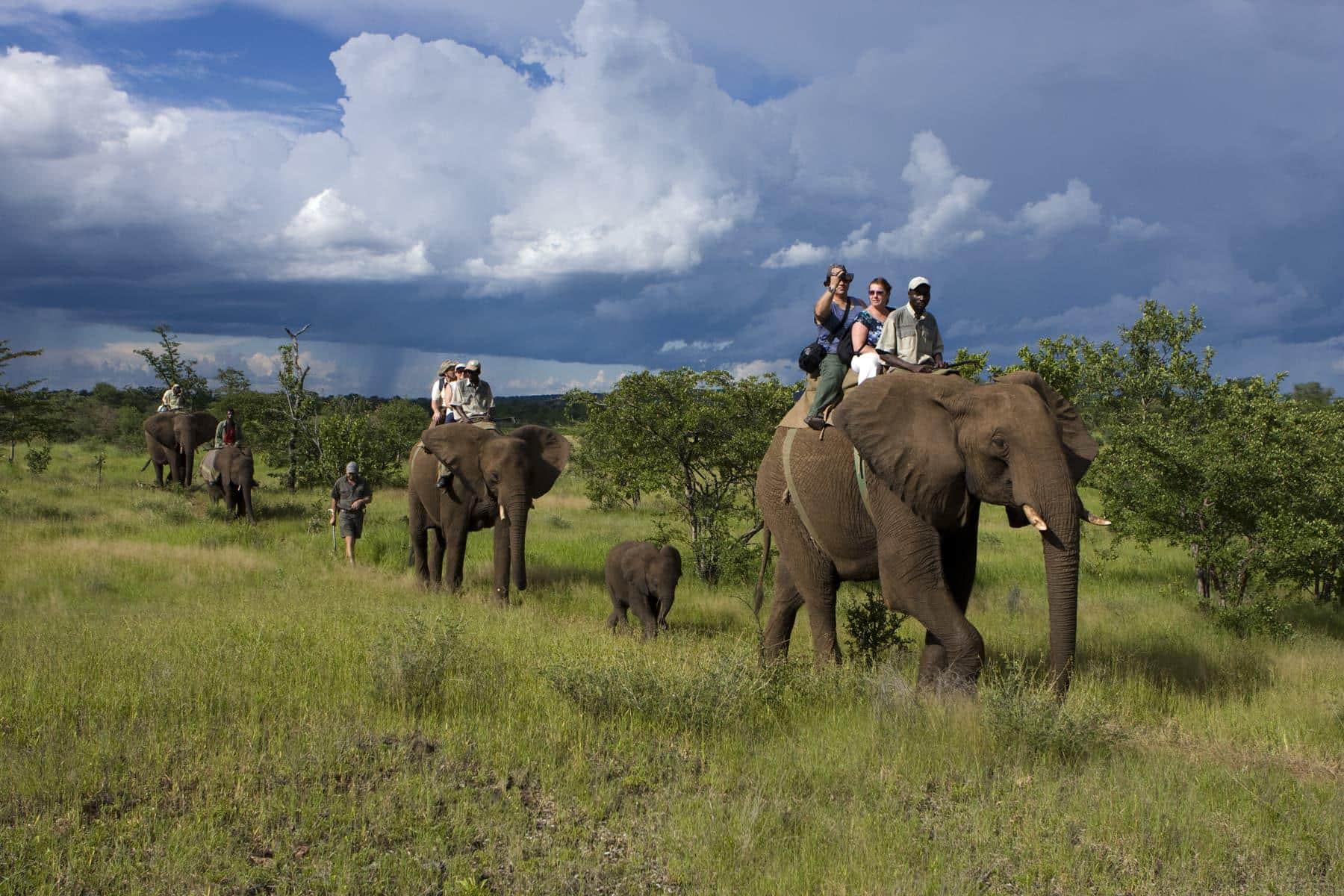
If you are planning on combining your Victoria Falls visit with a safari nearby, then Zimbabwe’s vast Hwange National Park teaming with wildlife, is only about two and a half hour’s drive away. From the Zambian side, you can visit the Mosi-oa-Tunya National Park just up river. Or try a water-based safari on the banks of the Chobe River in the Chobe National Park (about an hour and a half away) which is a popular safari add–on to a Vic Falls visit.
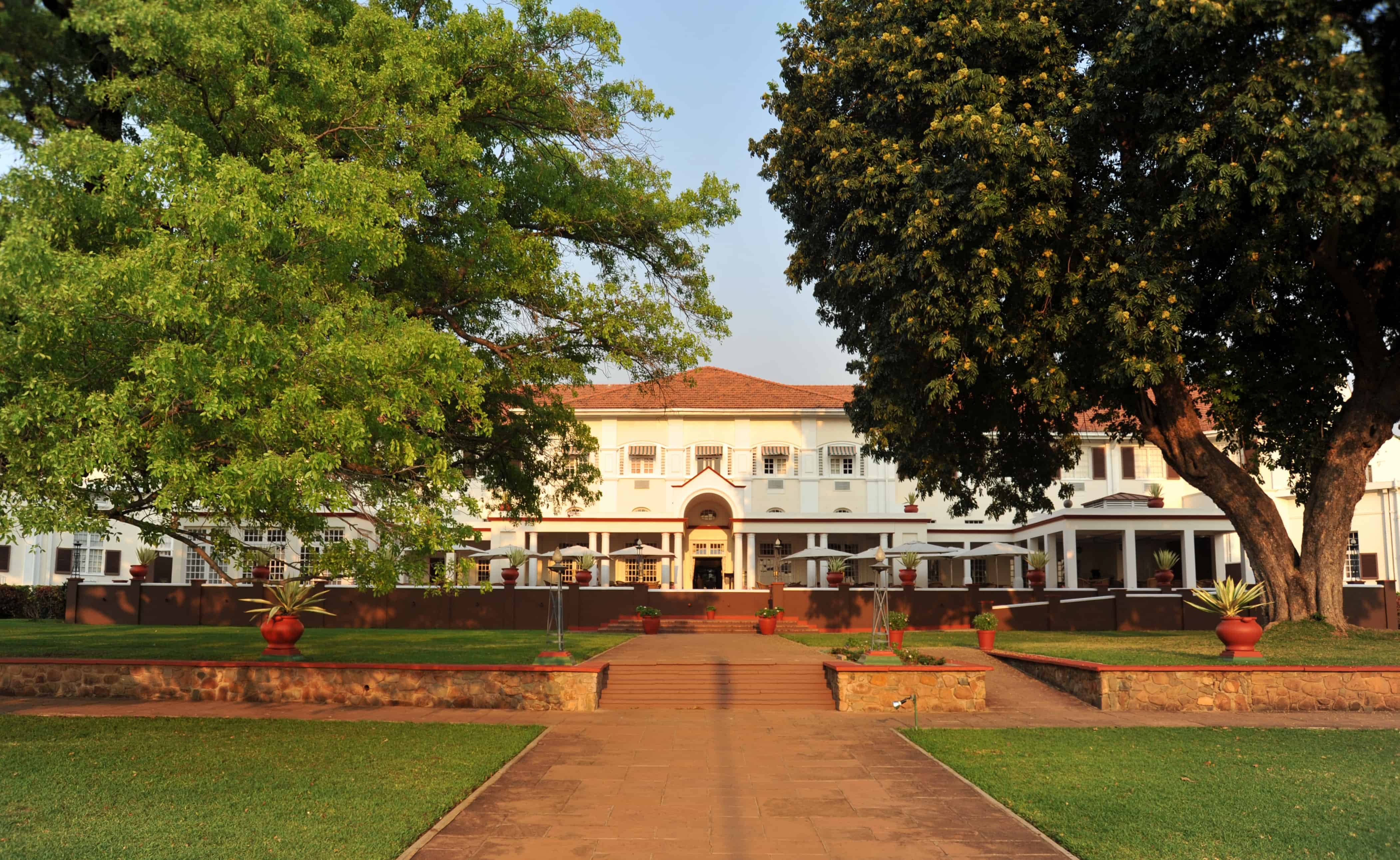
The Zimbabwean side is the older, more established tourist town with the colonial Victoria Falls Hotel, steeped in history and occupying prime position with the best views of the Falls and the great iron arched bridge that links the two countries. At the Victoria Falls Safari Lodge out of town, the highlight is looking down onto a busy waterhole from the comfort of your private terrace. And on the local golf course, it is not uncommon to have warthogs and monkeys displacing your golf ball on the fairways!
On the Zambian side, activities and accommodation are slightly more expensive due to increased government taxes and levies. While development on the banks of the Zambezi River has been carefully controlled in Zimbabwe, (almost the entire riverfront is pristine national park teaming with wildlife) the same cannot be said on the Zambian side where increasingly expanding development is a threat to the natural surroundings.
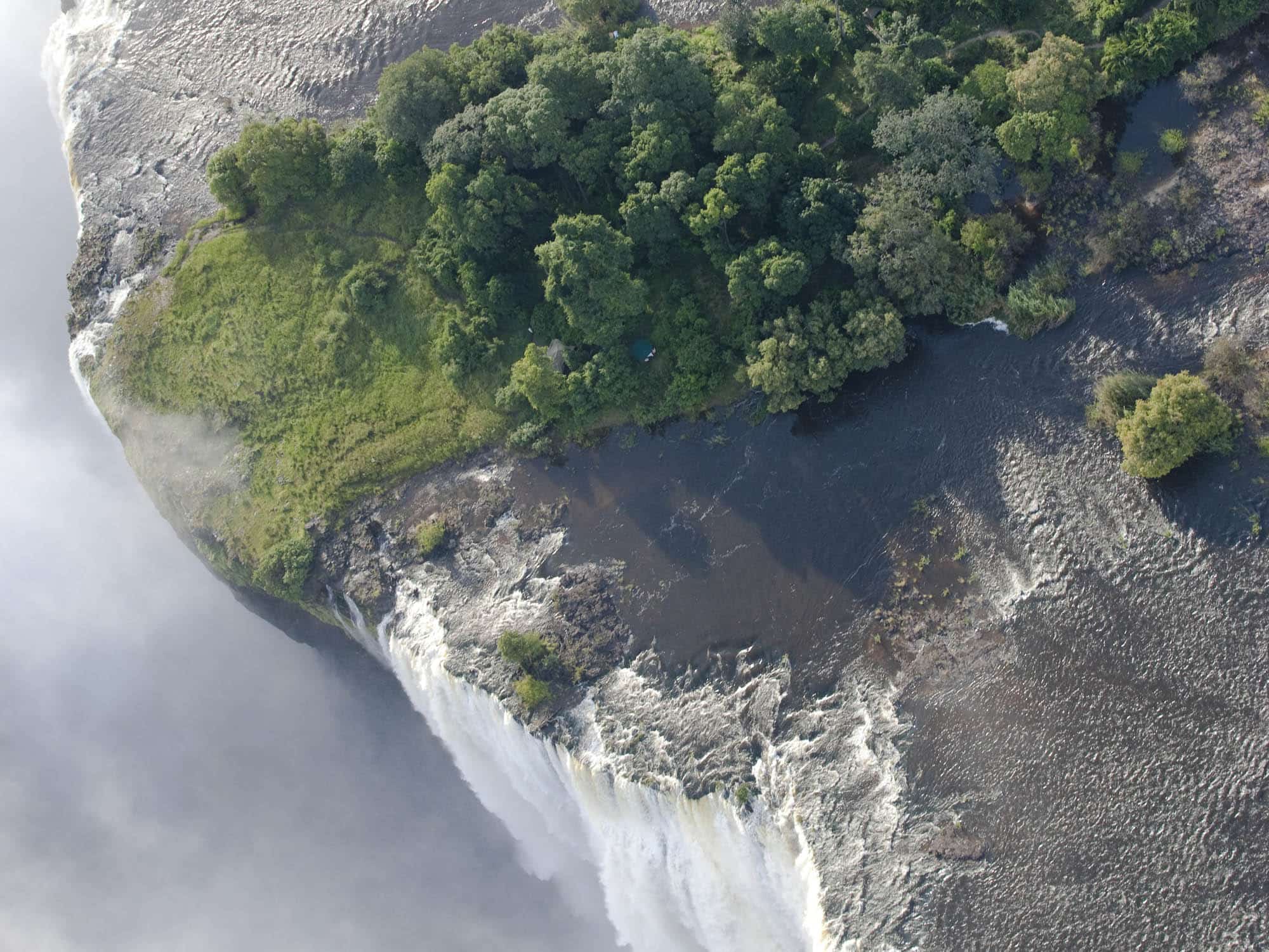
For visitors, Zambia does however, boast two of our favorite resort-like hotels which are situated right next to the entrance leading to Vic Falls. The Royal Livingstone Hotel and The Zambezi Sun Hotel both conveniently offer their residents a private entrance gate to the Falls, perfect for saving costs and seeing the Falls at sunset with a quick exit when it gets dark. A boat trip and a picnic on Livingstone Island is also a must-do activity. It’s quite thrilling standing in the middle of the Zambezi River exactly where David Livingstone once stood!
In recent years, Zimbabwean tourism has unfortunately suffered as a result of the political and economic upheavals in that country while Livingstone has benefited from considerable investment into new infrastructure, hotels and lodges. The Zimbabwean people however are so eager to please and hospitable that it is really rewarding to visit the Zim side and contribute to the livelihoods of the local people.
Flight connections from Botswana’s Chobe and Okavango safari camps can be made to either side, though options from international hubs are more frequent to Victoria Falls International Airport in Zimbabwe.
The beautiful Victorian bridge is an attraction in itself, and at the middle of the bridge (no man’s land) is the world’s highest bungee jump…! You can cross the bridge for the day and freely move between the two countries. Depending on your nationality, the cost of a visa is US$30 for Zimbabwe and US$50 for Zambia. Another plus point for Zimbabwe is that you don’t need a yellow fever inoculation. When returning from Zambia to South Africa however, you will need to show proof of this by means of a yellow fever certificate.
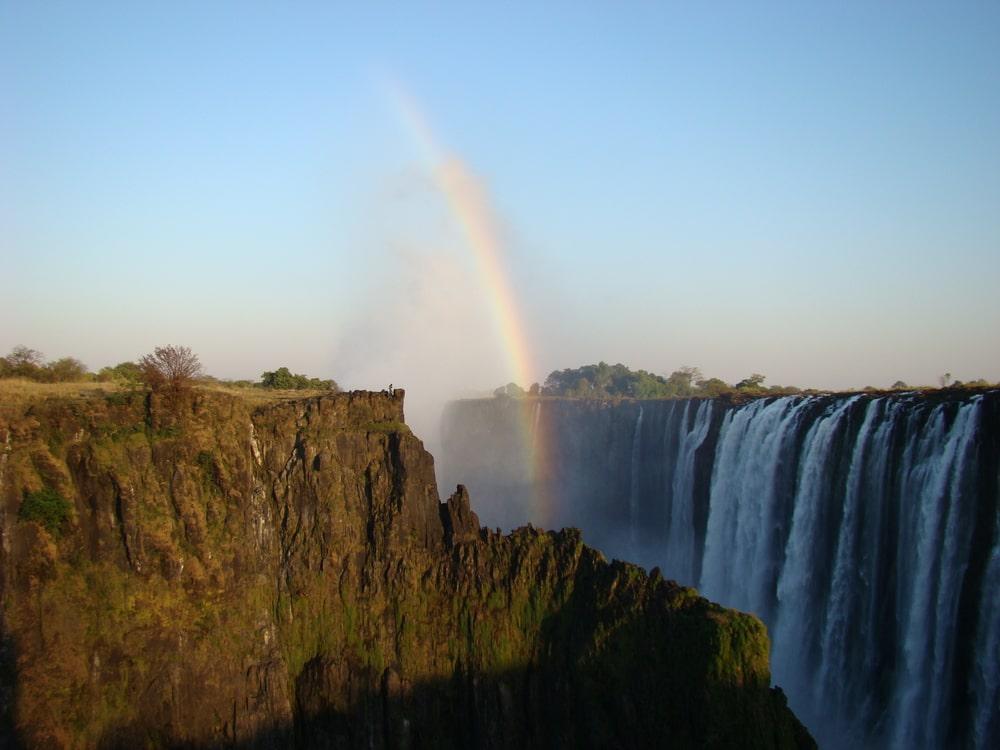
So which is the best side to visit, Zimbabwe or Zambia? Actually it boils down to routing and the logistics of where you are coming from and going to. It also depends on the time of year and the effect on the water levels in relation to what you want to do and see. And then there’s the yellow fever factor (children and elderly travelers don’t take well to yellow fever inoculations). What we can vouch for is that you’ll leave with another bucket list experience under your belt, amazing photos and memories of 2 or 3 fun-filled days, a highlight in any African Safari and a place we fondly call Vic Falls!
